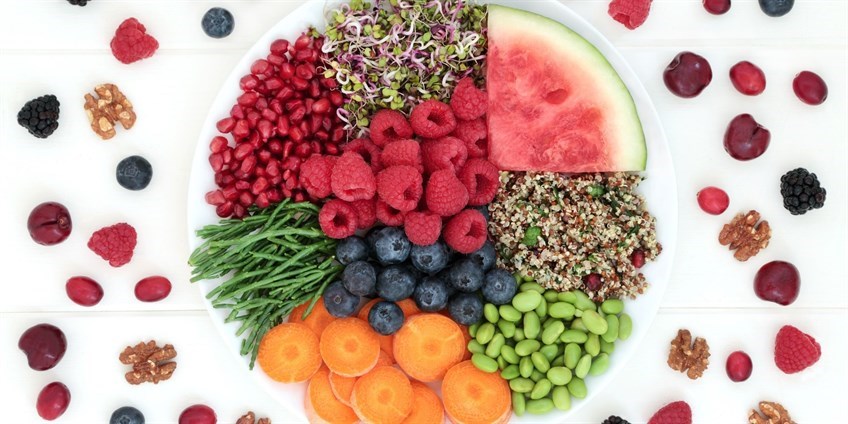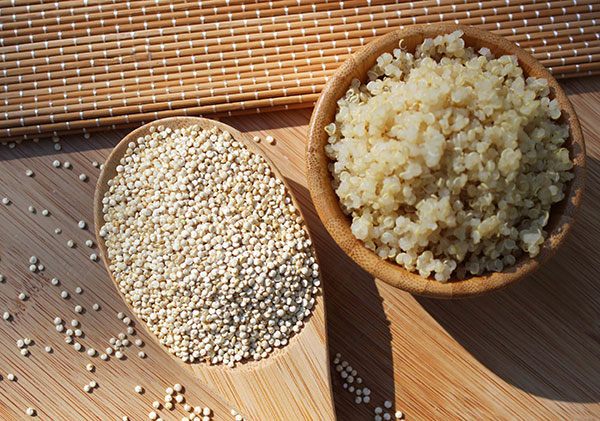6 SUPERFOOD LISTS THAT YOU SHOULD ADD TO YOUR DIET!

Superfood?
In a world constantly on the move, maintaining a healthy body is profound as it could put a halt to everyday requirement including work and social life. Therefore, the choices we make about the food we consume are perhaps the most influential decisions we make daily, as it doesn’t just shape our individual health but also the collective vitality of generations to come. Superfoods, packed with essential nutrients, can play a significant role in promoting health and preventing various diseases. However not a single food can provide all the nutrients, health benefits and energy we need for our body. According to 2015–2020 US Dietary Guidelines, “a healthy eating pattern is combining healthy choices from across all food groups while paying attention to calorie limits.” This article aims to highlight a list of essential superfoods that should be included in your diet to ensure optimal health and vitality.
List of Superfoods
- BERRIES

Berries are considered beneficial to our health due to its high antioxidant content, particularly anthocyanin. These compounds have been linked to the abilities that may help protect the body from heart disease and reduce inflammation. Some of the most well-known berries are Strawberries, Blueberries, Blackberries and Cranberries. Cheatham et al. (2023) found that regularly eating blueberries may improve memory and delay age-related cognitive decline. The result proved that the potential consumption of blueberries has supported neural functioning. Besides, eating berries can also be effective in treating various digestive and immune-related disorders combined with established treatment or therapies (Govers et al., 2018). There is various ways to enjoy berries as it can be part of your breakfast plate, a smoothie or a dessert.
- FATTY FISHES

Fatty fishes contain Omega-3 fatty acids eicosapentaenoic acid (EPA) and docosahexaenoic acid (DHA), which are essential for cardiovascular health and brain function. Furthermore, these fatty acids help in reducing inflammation, preventing fat deposited in the arteries, improving blood flow and reducing triglyceride levels (Shahidi & Ambigaipalan, 2018). Our body cannot produce omega 3 fatty acids naturally. Therefore, it must be obtained through diet. Fatty fish such as salmon, sardine and mackerel are excellent sources of omega 3 and it is highly nutritious packed with `healthy fats’, protein, vitamin B, and minerals such as potassium and selenium. It is one of the best source to reduce inflammation and may help reduce the risk of cardiovascular issues (Zivkovic et al. 2011).
!! the serving of fatty fish is limited to one to two servings weekly due to the risk of heavy metal contamination in larger fish.
- QUINOA

Quinoa is one of the many varieties of whole grain. Whole grains are made up of all three components of the grain. There are numerous varieties, such as whole wheat and whole corn, oats, brown rice and quinoa. Seal (2006) stated that whole grains provide a variety of essential elements such as vitamins, minerals, protein, fiber, and other beneficial plant compounds. Fiber content in whole grains helps to reduce bad cholesterol levels (LDL), blood pressure and aids in weight loss as it can create a feeling of fullness. For instance, Quinoa is a complete protein and is a great alternative to traditional grains. It contains high fiber, vitamins, and minerals, making it a great addition to any balanced diet (Carreiro et al. 2016). A combination of quinoa with high protein food in a daily diet provides you with a variety of health benefits to support your gut health and body weight management.
- DARK LEAFY VEGETABLES

Dark leafy vegetables are a crucial part in every diet as they are packed with a bunch of nutrients such as vitamins, minerals and fibre. According to Malaysian Food Pyramid 2020, the recommended intakes for vegetables are more than 3 servings in a daily food intake. There are some examples of dark leafy vegetables that you can add in your diet such as Kale. Kale is a nutrient powerhouse, rich in vitamins A, C, and K, as well as calcium and fibre. It contains antioxidants and compounds that may help protect against certain types of cancer (Ortega et al. 2021). Besides, spinach is also one of the vegetables that are often on the list of the healthiest foods. Spinach is filled with nutrients such as vitamins, minerals, and antioxidants. It is also an excellent source of iron and folate, crucial for increasing hemoglobin in blood and preventing anemia symptoms.
- YOGURT

Yogurt is a superfood that should be included in your healthy diet list. It is not only diverse, but has numerous health benefits and abundant with nutrients such as protein and calcium. It is a good source of probiotic equipped with detoxifying properties making it ideal for weight loss and beneficial to your skin. Furthermore, yoghurt is packed with healthy bacteria, which can aid digestion, promote gut health and protect from colon cancer (Kim CE et al. 2022). In addition, consumption of dairy products such as yogurt helps in strengthening body’s immunity and prevention from viral infections due to their beneficial effect that has been mainly attributed to its probiotic.
- SWEET POTATOES

Sweet potatoes scientifically known as Ipomoea batatas, are a versatile and nutritious root vegetable that has captured the palates and hearts of people around the world. With their vibrant colours, rich flavours, and numerous health benefits, sweet potatoes have earned their place not only on dinner plates but also in culinary traditions and discussions about wellness. One of the most striking features of sweet potatoes is their spectrum of colors, which ranges from pale yellows to deep oranges and even purples. This diverse color palette is indicative of the variety of nutrients and antioxidants they contain. The vibrant orange hue, for instance, is a sign of their high beta-carotene content, a precursor to vitamin A that supports vision, immune function, and skin health (Johra FT et al. 2020).
Conclusion
Incorporating a variety of superfoods into your diet can have a profound impact on your overall health and well-being. These nutrient-dense foods provide a wide array of vitamins, minerals, antioxidants, and other beneficial compounds that support various bodily functions and help protect against chronic diseases. By including superfoods like berries, quinoa, fatty fishes, green leafy vegetables, yogurt, and sweet potatoes, you can create a foundation for a balanced and nutritious diet that promotes long-term health. Remember, a diverse and colorful plate is key to reap the full benefits of these incredible superfoods!
References
- Cheatham CL, Canipe LG 3rd, Millsap G, Stegall JM, Chai SC, Sheppard KW, Lila MA. Six-month intervention with wild blueberries improved speed of processing in mild cognitive decline: a double-blind, placebo-controlled, randomized clinical trial. Nutr Neurosci. 2023 Oct;26(10):1019-1033. doi: 10.1080/1028415X.2022.2117475. Epub 2022 Sep 6. PMID: 36066009.
- Govers C, Berkel Kasikci M, van der Sluis AA, Mes JJ. Review of the health effects of berries and their phytochemicals on the digestive and immune systems. Nutr Rev. 2018 Jan 1;76(1):29-46. doi: 10.1093/nutrit/nux039. PMID: 29087531.
- Zivkovic AM, Telis N, German JB, Hammock BD. Dietary omega-3 fatty acids aid in the modulation of inflammation and metabolic health. Calif Agric (Berkeley). 2011 Jul;65(3):106-111. doi: 10.3733/ca.v065n03p106. PMID: 24860193; PMCID: PMC4030645.
- Shahidi F, Ambigaipalan P. Omega-3 Polyunsaturated Fatty Acids and Their Health Benefits. Annu Rev Food Sci Technol. 2018 Mar 25;9:345-381. doi: 10.1146/annurev-food-111317-095850. PMID: 29350557.
- Seal CJ. Whole grains and CVD risk. Proc Nutr Soc. 2006 Feb;65(1):24-34. doi: 10.1079/pns2005482. PMID: 16441941.
- Carreiro AL, Dhillon J, Gordon S, Higgins KA, Jacobs AG, McArthur BM, Redan BW, Rivera RL, Schmidt LR, Mattes RD. The Macronutrients, Appetite, and Energy Intake. Annu Rev Nutr. 2016 Jul 17;36:73-103. doi: 10.1146/annurev-nutr-121415-112624. PMID: 27431364; PMCID: PMC4960974.
- Ortega-Hernández E, Antunes-Ricardo M, Jacobo-Velázquez DA. Improving the Health-Benefits of Kales (Brassica oleracea L. var. acephala DC) through the Application of Controlled Abiotic Stresses: A Review. Plants (Basel). 2021 Nov 29;10(12):2629. doi: 10.3390/plants10122629. PMID: 34961097; PMCID: PMC8706317.
- Kim CE, Yoon LS, Michels KB, Tranfield W, Jacobs JP, May FP. The Impact of Prebiotic, Probiotic, and Synbiotic Supplements and Yogurt Consumption on the Risk of Colorectal Neoplasia among Adults: A Systematic Review. Nutrients. 2022 Nov 21;14(22):4937. doi: 10.3390/nu14224937. PMID: 36432622; PMCID: PMC9697560.
- Johra FT, Bepari AK, Bristy AT, Reza HM. A Mechanistic Review of β-Carotene, Lutein, and Zeaxanthin in Eye Health and Disease. Antioxidants (Basel). 2020 Oct 26;9(11):1046. doi: 10.3390/antiox9111046. PMID: 33114699; PMCID: PMC7692753.




